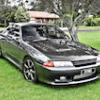R32 rwd front wheel speed sensors
Announcements
-
Similar Content
-
Latest Posts
-
Has equal chance of cleaning an AFM and f**king an AFM. I think you can work out what happened. When the Hitachi ECU sees the AFM die and goes into the associated limp mode, then it will start and run just fine, because it ignores the AFM and just runs on idle maps that will do what it needs to get it going. But there is no proper load signal, so that's about all it can do. My suggestion? If you don't want to go full aftermaket ECU, then get some R35 GTR AFM cards and some housings to put them in, in the stock location, and Nistune the ECU. Better to do a good upgrade than just replace shitty 40 year old tech with the same 40 year old tech.
-
By steven7270 · Posted
So my car was recently having trouble starting on initial crank, I would need to feather the gas for it to start up but besides that it would start and run fine. So I clicked the idle air control valve (with throttle body cleaner) and cleaned the MAF sensors (with MAF cleaner). The start up issue was fixed and now the car turns over without the assist of the throttle, but the car is in limp mode and wont rev past 2.5k RPM. From what I understand the IACV would not put the car in limp mode, so I am to believe it is the MAF sensors, but it was running fine before and now I cant get it out of limp mode. I cleaned the MAF made sure the o rings were seated properly. Made sure the cables were plugged in properly, the cables also both read the same voltage. Does anybody know why this is or what could be causing this or how to get it out of limp mode? -
By Dose Pipe Sutututu · Posted
Ooo I might actually come and bring the kids, however will leave the shit box home and take the daily -
Thanks. Yeah I realised that there's no way I'd be able to cover the holes with the filler, it would just fall through. Thanks again @GTSBoy!
-
That was the reason I asked. If you were going to be fully bodge spec, then that type of filler is the extreme bodge way to fill a large gap. But seeing as you're going to use glass sheet, I would only use that fibre reinforced filler if there are places that need a "bit more" after you've finished laying in the sheet. Which, ideally, you wouldn't. You might use a blob of it underneath the sheet, if you need to provide some support from under to keep the level of your sheet repair up as high as it needs to be, to minimise the amount of filler you need on top. Even though you're going bodge spec here, using glass instead of metal, the same rules apply wrt not having half inch deep filler on the top of the repair. Thick filler always ends up shitting the bed earlier than thin filler.
-







Recommended Posts
Create an account or sign in to comment
You need to be a member in order to leave a comment
Create an account
Sign up for a new account in our community. It's easy!
Register a new accountSign in
Already have an account? Sign in here.
Sign In Now